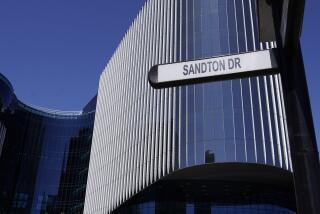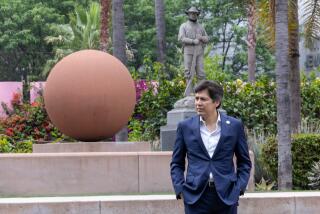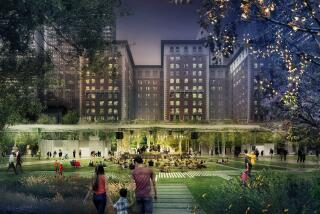San Pedro Street Renamed in Honor of Area’s Croats
The days when Balkan upheavals echoed in San Pedro’s neighborhoods seem to be comfortably in the past, prompting Croats to turn their attention to getting civic recognition for their heritage.
On Tuesday, the Los Angeles City Council voted unanimously to name a portion of 9th Street in San Pedro “Croatian Place,” and dozens of aging Croatian immigrants, along with Croatian Consul General Sanja Bujas Juraga, crowded into City Hall to celebrate the honor.
“So happy today for our street,” said Antonija Rancic, 63, one of about 35,000 Croats who make the harbor area one of the largest Croatian communities in the United States. “Everybody be so proud.”
Croats began immigrating to Los Angeles in great numbers at the end of the 19th century, fleeing the harsh regime of the Austro-Hungarian empire.
On San Pedro’s bluffs, they found a landscape that resembled the sun-kissed islands and inlets of the Dalmatian Coast. And in the waters off the harbor, they fished as they had for generations in the crystal blue waves of the Adriatic Sea.
In many respects they were model immigrants -- successful business people who sent their children to college, supported St. Anthony’s Croatian Church and fell in love with America -- while holding on to their taste for plum brandy, strong coffee and cigarettes.
But they could not escape the ethnic tensions that roiled their homeland.
Until the 1990s, Croatia was part of Yugoslavia, a Communist country that also included Montenegro, Serbia, Bosnia-Herzegovina, Slovenia, Macedonia and Kosovo. The government, headquartered in the Serbian city of Belgrade, made it a crime to sing Croatian songs or fly the Croatian flag, and many Croats believe Serbs were treated to nicer apartments and better jobs.
Halfway around the world in San Pedro, the community was split between those who called themselves Croats and those who referred to themselves as Yugoslavs, even if they were of Croatian descent, according to Josip Mardesic, a controller who also serves as president of the Croatian American Club.
Mardesic said that in the 1970s several Croat-owned stores in San Pedro were bombed, and he himself received a threatening letter. Some community members blame the Yugoslavian government, while others say the culprits’ identities remain a mystery.
But tensions in San Pedro ran high, and played out at community events as well. A riot erupted at San Pedro’s Daniel Field in the 1980s when the local Croatian team played the local Yugoslav team.
“There were Croatians who wanted a free Croatia, and others who saw unity within the Yugoslav nation,” said Anthony Misetich, a former president of the Dalmatian-American Club, which used to be called the Yugoslav-American Club.
Yugoslavia’s civil war brought the two Croatian factions together. In the 1990s, as Yugoslavia disintegrated and Serbia and Croatia fell into a bloody conflict, the Croats of San Pedro directed their anger toward Serbs. San Pedro’s Yugoslav club dropped its rivalry with Mardesic’s Croatian American club and changed its name to the Dalmatian Club. “No more Yugoslav,” one Croatian man declared at the time.
Today, tempers have mellowed and civic boosterism is the focus.
But until this year, no street in San Pedro bore witness to the area’s Croatian heritage. In July, Councilwoman Janice Hahn pushed a successful plan to change the name of a section of Palos Verdes Street to Ante Perkov Way after the recently deceased founder of San Pedro’s best-known Croatian restaurant, Ante’s.
This summer, Mardesic and other members of the Croatian American Club asked Hahn to rename a portion of the street in front of their club. When the change was announced Sunday at St. Anthony’s Croatian Catholic Church, the staid congregation broke into applause.
“It feels great,” Mardesic said. “This colony that has been here since 1800s, they have always been very humble, work hard, be productive and go home to their families, and that’s all they ever ask for. To have a street named after them, it is great.”
More to Read
Sign up for Essential California
The most important California stories and recommendations in your inbox every morning.
You may occasionally receive promotional content from the Los Angeles Times.










